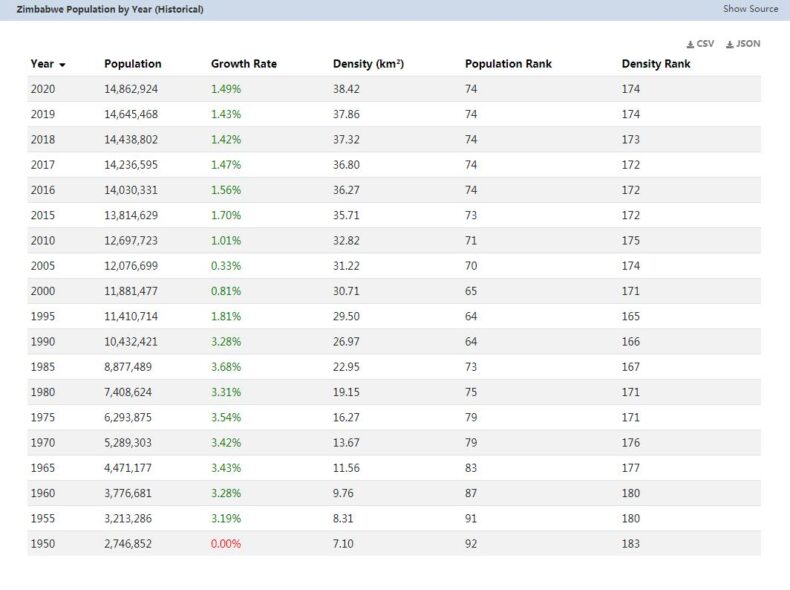Zimbabwe is a landlocked country in southern Africa, surrounded by Botswana, South Africa, Mozambique and Zambia. The name “Zimbabwe” goes on historical Rich back in today’s state and means “big stone house” in the Shona language.
Zimbabwe is currently dominating the negative headlines: political oppression by President Mugabe, expropriation of farms, the highest inflation worldwide, increasing poverty in large parts of the population.
If these problems are solved in the future, Zimbabwe will again become a popular travel destination. The visitor will find both historical and scenic sights here, the highlights of the country being the numerous national parks with species-rich wildlife. Everyone gets their money’s worth in Zimbabwe: on exciting safaris, white water rafting on the Zambezi or hiking in the hills of eastern Zimbabwe.
Zimbabwe has a long history and history. The cave paintings are considered valuable evidence from times past. The people of the Stone Age culture, whose descendants (the Bushmen or San) still live in southern Africa, created rich works of art. The culture lived in today’s Zimbabwe region until around 1000 AD. This phase can be compared to the European Middle Stone Age.
The important stone buildings of the ruined city of Great Zimbabwe are also among the most important sights and cultural monuments in Zimbabwe. The high culture existed until the 15th century and was referred to as the Munhumutapa Empire. The art of stone construction has a long tradition in Zimbabwe. This art continues today. The stonemasons who worked with the soft soapstone created the basis for a new tradition in sculpture in the 20th century. The stone raw materials can be found in their own country. In the Great Dykethe best conditions are given. Mineral raw materials such as serpentinite and opal, or even marble and jade, are extracted here in many colors and can be processed later.
Area: 390,757 km² (land: 386,847 km², water: 3,910 sq km)
Population: 12.1 million people (July 2011, COUNTRYAAH.COM). 98% of the population are black Africans (including Shona 82% and Ndebele 14%), mixed ancestors and Asians 1%, whites or Europeans less than 1%.
Population density: 31 people per km²
Population growth: 4.31% per year (2011, CIA)
Capital: Harare (1.6 million residents, 2007).
Here is a detailed list of the major cities in Zimbabwe.
Form of government: Zimbabwe has been a presidential republic since 1980. On March 20, 2002, Zimbabwe was suspended from the Commonwealth due to election manipulation. On December 7, 2003, Zimbabwe left the federal government. The constitution dates from 1980, the last constitutional change was made in 2005. The bicameral parliament is made up of the House of Assembly (210 MPs elected every 5 years) and the Senate (93 seats – 60 members are elected every 5 years by the people, 10 seats for provincial governors nominated by the president, 16 seats for traditional chiefs elected by the Council of Chiefs, 2 seats for the President and Deputy President of the Council of Chiefs, and 5 seats for the President’s designated individuals). Zimbabwe has been from the UK since April 18, 1980 independently.
Administrative divisions: 8 provinces (Manicaland, Mashonaland Central, Mashonaland East, Mashonaland West, Masvingo, Matabeleland North, Matabeleland South and Midlands) and 2 provincial cities (Bulawayo and Harare).
Prime Minister: Prime Minister Morgan Tsvangirai, since February 11, 2009
Head of state: President Robert Gabriel Mugabe, since December 3, 1987
Highest point: Inyangani, 2,592 m
Lowest point: confluence of the Runde and Save rivers, 162 m
Language: The official language in Zimbabwe is English. Shona and the language of Ndebele, Isindebele serve as colloquial languages. There are also numerous small languages in the country.
Religion: 50% followers of a mixture of Christianity and natural religions, 25% Christians; 24% followers of natural religions, 1% Muslim, Jewish and other minorities.
Local time: CET + 1 h
In Zimbabwe there is no change between summer and winter time.
The time difference to Central Europe is +1 h in winter. In summer there is no time difference to Central Europe.
Telephone area code: 00263 or +262
Internet ID:.zw
Mains voltage: 220/230 V, 50 Hz. The plugs have three square and rarely round poles and are protected with 13 amps.
Geography
Zimbabwe borders Mozambique in the east and northeast, South Africa in the south and Botswana in the southwest. The Zambezi is the northwestern border with Zambia.
Zimbabwe has no access to the sea and is therefore one of the landlocked countries.
Here you can find a detailed topographic map of Zimbabwe.
In the hilly highlands in the center of the country, numerous rivers flow into the Kariba reservoir in the northwest, the Botswana wetlands in the west or the Zambezi River in the northeast.
The highlands in the northwest are often interrupted by Kopjes (massive granite stone blocks).
On the eastern border with Mozambique, Zimbabwe’s main mountains rise, a 350 km long mountain range, the highest point of which is the 2,592 m high Mount Inyangani.
South Zimbabwe is mainly dominated by the hot and dry savanna (lowveld), which drops imperceptibly towards the Limpopo on the border with South Africa.
Zimbabwe has some of the most beautiful national parks in southern Africa: Hwange (in the west of Zimbabwe), Matapos (in the south), Gonarezhou (in the southeast), Mana Pools (in the northeast) and Nyanga (in the east).
Population in Zimbabwe
This map of Zimbabwe’s population distribution was created by the Worldmapper team. Densely populated areas appear bloated, the area of sparsely populated areas is reduced. The shape of the grid has been preserved; an underlying map with the original geographical extent helps interpret the map. The distorted map should help to present abstract statistical information clearly.




